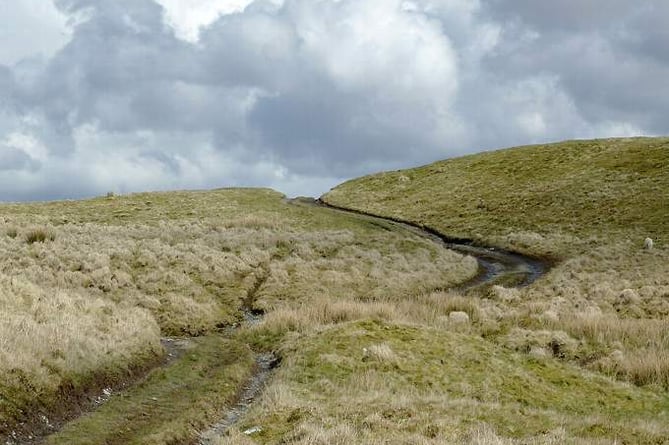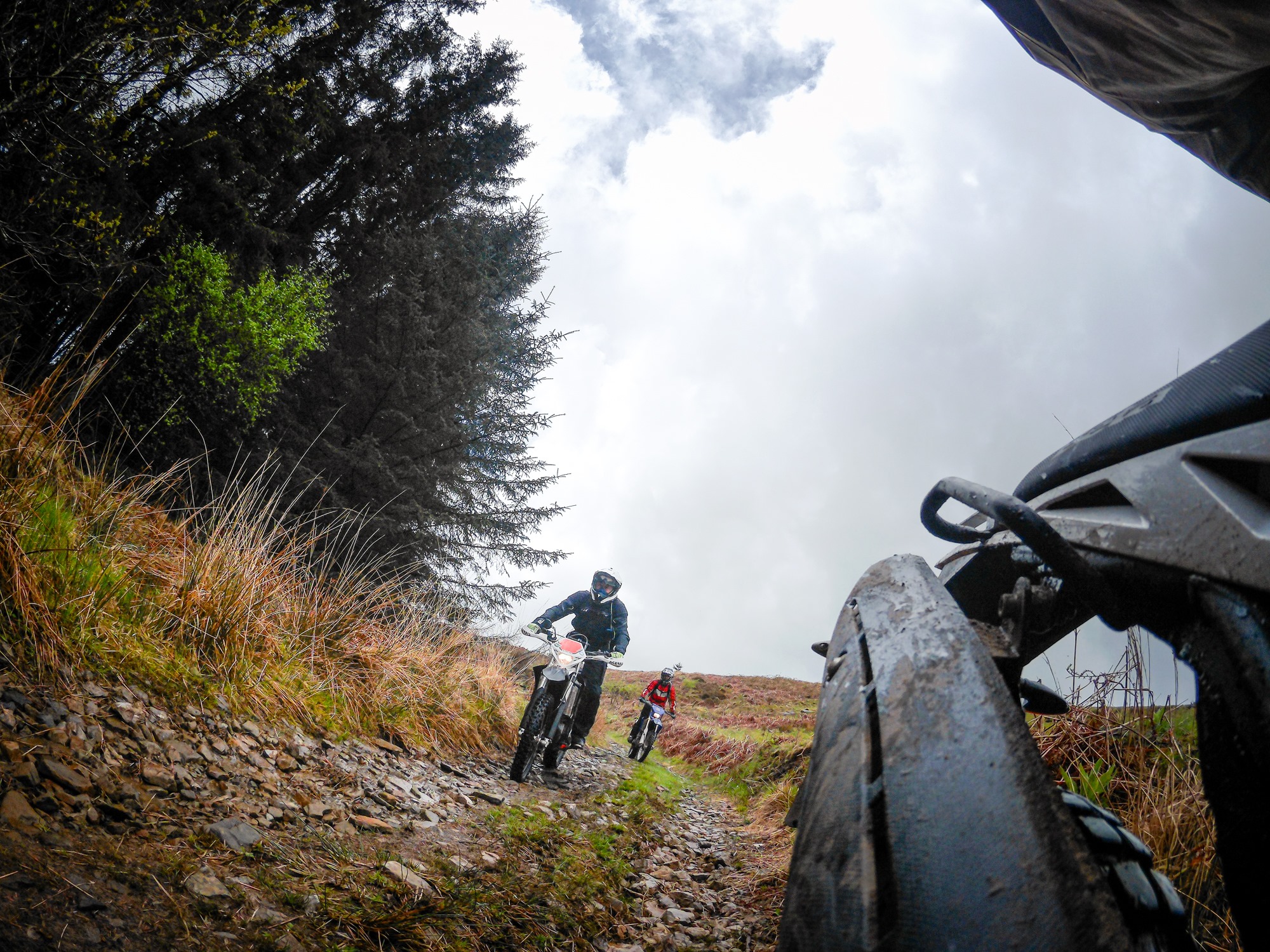
Repairing water damage to a Hampshire lane
When water damage left Pidham Lane in Hampshire on the brink of closure and Hampshire County Council unable to commit to a repair, things didn't look too good for Loddon Vale TRF. That is until they discovered the council’s small grant scheme. With 50% costs put forwards by the council, and the other 50% by the club, the door to keeping this popular lane was thrown open again.
Pidham Lane byway forms part of the East Meon 5-ways complex at Langrish village near Petersfield. This set of byways is subject to a permanent TRO since 1993 limiting vehicular traffic to three wheels or fewer. This is a great set of byways which are shared by motorbikes, horses and walkers. It’s an area that Loddon Vale TRF frequently takes organised ride outs to year-round.
Hampshire County Council highlighted in 2016 that the byway was at risk of closure because of significant surface water damage. The surface conditions are mostly chalk in this area and over many years the chalk has been washed away in places.
The damage had created a number of large craters which were becoming dangerous to horse riders and pedestrians. LVTRF and HCC held a joint site visit in July 2016 and HCC suggested that LVTRF could use the HCC ‘Small Grants Scheme’ to help fund repairs that would keep the road open. HCC had estimated that 50 tonnes of hardcore materials would be required to fill the craters and create a stable foundation.
Funding
The way that Loddon Vale TRF approached this repair is interesting. It involved volunteers, fund raising, small grant schemes and the approval of official bodies.
The HCC Small Grants Scheme (SGS) is a matched funding scheme, where 50% of the costs of performing repairs is provided by HCC, and the other 50% is made up of volunteer man hour in-kind costs, plus LVTRF funding. HCC made estimates of material quantities, and obtained quotations. There is a maximum of 25% in-kind man hours so with a total estimated cost of around £2300 the LVTRF needed to find around £600 to fund the activity. The club gratefully received a donation of £200 from Witley MCC at the time.
The LVTRF group discussed the opportunity at a number of club and committee meetings. This would be the first time that the LVTRF club had taken on a job of this scale so there was some careful consideration to make sure they would be capable of doing a good job.
They made contact with Chris Cole at Devon TRF to get insight into the work that had been performed by them. The Devon TRF shared their method statements and risk assessments so LVTRF could build on their experience. The SGS application was submitted in October 2016, and the contract with HCC was signed by Brian H, the LVTRF chairman, in January 2017.
Fixing
The biggest challenge was the organisation of machinery to move and place the 50 tonnes of hardcore materials. Originally it was envisaged that a mini-shovel, dumper and digger would be needed. To hire this type of machinery with operators and public liability insurance proved to be a big challenge.
There are many companies that hire out equipment with operators, but typically this is on a Monday-Friday basis or for a whole weekend. There is also the logistics of getting the machinery to site and the security issues which meant we really wanted to complete the work within a day the machinery was not on site overnight.
Luckily the LVTRF group found in their membership a couple of experienced people who had their own machinery, training and insurance. This hugely simplified the activity as they could contract these guys to bring their machinery for a one day event.
And so LVTRF had the 50 tonnes of materials delivered on the day before the work day. The delivery truck drivers battled hard to get the materials delivered as close to the work site as possible which meant reversing 20 tonne vehicles up 100m of the byway through a lot of mud and overhanging trees.
Steve T had prepared a risk assessment for the event. The key risks identified were using hand tools, manual lifting and working around machinery. The key mitigations that had been identified were for everyone to have hi-viz vests for maximum visibility, for anyone working with tools to be competent and have suitable PPE, and having work gloves available for all to use.
The machinery turned out to be well matched to the job in hand. Dick R brought his CASE 420 tracked loader, and Leigh B brought along a hired 3te mini-digger. LVTRF had 14 volunteers turn out plus a couple from Southern TRF. The volunteers focussed on clearing overhanging trees and vegetation and assisting on draining some of the water logged areas. Ade B setup a canteen which meant they had hot drinks and a lunchtime burger. This meant the day was a good sociable occasion as well.
The repairs were done to the major damaged areas and completed by 4pm – on schedule. Last job was to put up some signage at the end of the byway indicating that the work had been performed by LVTRF in cooperation with HCC.
“We have built up a good relationship with Hampshire CC and have been talking to them about other green roads in need of repair in the area. I think we need to get greater visibility of the members within the TRF who have the experience and access to earth moving machinery. This has proved to be the key element in performing a significant work scope such as we took on. There is a lot of potential for the TRF to demonstrate that we are part of the solution to keep the green road network open for the long-term future.”





